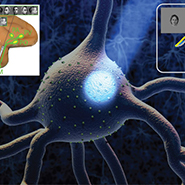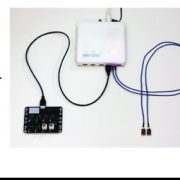We are combining freely moving animal behavior (left), massively parallel recordings (middle), and real-time decoding of ensemble firing patterns to investigate and manipulate memory formation as it occurs.
Neural Circuits for Intelligence
 Abstract thinking and complex problem solving constitute paradigmatic examples of computation emerging from interconnected neuronal circuits. The biological hardware represents the output of millions of years of evolution leading to neuronal circuits that provide fast, efficient, and fault-tolerant solutions to complex problems. Progress toward a quantitative understanding of emergent intelligent computations in cortical circuits faces several empirical challenges (e.g., simultaneous recording and analysis of large ensembles of neurons and their interactions), and theoretical challenges (e.g., mathematical synthesis and modeling of the neuronal ensemble activity). Our team of theoreticians and neurophysiologists is focused on systematic, novel, and integrative approaches to deciphering the neuronal circuits underlying intelligence. Understanding neuronal circuits that implement solutions to complex challenges is an essential part of scientific reductionism, leading to insights useful for developing intelligent machines.
Abstract thinking and complex problem solving constitute paradigmatic examples of computation emerging from interconnected neuronal circuits. The biological hardware represents the output of millions of years of evolution leading to neuronal circuits that provide fast, efficient, and fault-tolerant solutions to complex problems. Progress toward a quantitative understanding of emergent intelligent computations in cortical circuits faces several empirical challenges (e.g., simultaneous recording and analysis of large ensembles of neurons and their interactions), and theoretical challenges (e.g., mathematical synthesis and modeling of the neuronal ensemble activity). Our team of theoreticians and neurophysiologists is focused on systematic, novel, and integrative approaches to deciphering the neuronal circuits underlying intelligence. Understanding neuronal circuits that implement solutions to complex challenges is an essential part of scientific reductionism, leading to insights useful for developing intelligent machines.

